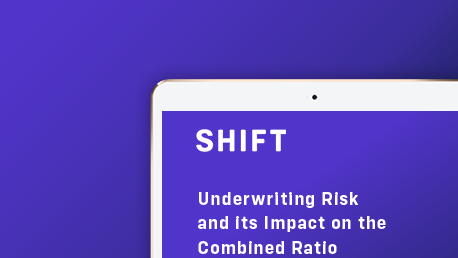The insurance marketplace demands speed, ease of use, and high responsiveness. This means quick turnaround and accuracy during the underwriting process.
Underwriters can be challenged to meet this demand when the information they need to validate – quality underwriting decisions – is disjointed and doesn’t provide the full picture quickly. In other words, they’re between a rock and a hard place – the need for speed on one side, and the limits to review accurately and efficiently on the othe
AI gives underwriters the opportunity to square the need for speedy service with the need for accurate decision making, delivering on both. When underwriters can harness large sources of accurate data and use analytics to bring it to the forefront, they can make fairer and more accurate decisions at speed.
Insurance underwriters need more than just data
Insurers already collect and use a lot of data, but research from McKinsey shows that insurers are not always confident in the results of their investments. This is driven, in part, by the increase in digital quotes and applications, which adds a layer of anonymity to the insurance process.
Almost 70% of insurance executives say that an increase in digital underwriting activity has led to a corresponding increase in fraud. What’s more, individual data sources don’t necessarily highlight these fraud cases. For example, invalid identity and vehicle information may not trigger a cue for external data analysis, even though both the identity and the vehicle may be stolen.
Add to that the needed time for underwriters to search through external and internal data sources to manually build connections. In many cases, useful data points exist in siloed and disconnected formats. Valuable data that could potentially identify drivers with problematic claims histories ends up sitting unused.
Automated underwriting also isn’t enough
Like data, automation, has also become an invaluable tool for underwriters,
Automation helps speed up processes, improve efficiencies and reduce costs. As long as an application falls within certain pre-set parameters, it can be approved via straight through processing. Underwriters only need to conduct manual review for accounts that are over a certain threshold of suspicion, and data reports are easily automated.
So, why isn’t automation enough on its own?
The problem is that manually setting automation rules can create a sort of vicious cycle. Consider the following:
- Let’s say that a fraud network discovers that an insurer automatically approves most motorcycle insurance policies without review.
- The bad actors sign up for motorcycle insurance using fake identities and proceed to submit false claims.
- Discovering this, the insurer now begins automatically reviewing motorcycle insurance applicants.
- Legitimate motorcycle insurance applicants are now subjected to a lengthy review, and begin to abandon the application process.
- This also contributes to higher workloads for underwriters.
- So, the insurer decides only to review motorcycle insurance policies with a total value over $5,000 USD.
- Next, the fraud network discovers…
This is an obvious example, but the point is that an automated underwriting process is only convenient until it becomes a vulnerability. At that point, an automated underwriting process automatically admits fraud and misrepresentation into the insurance portfolio.
What’s more, it’s difficult for insurers to scale back the automation process once it’s begun. As soon as the insurer rolls back an automated underwriting process, it adds time and inconvenience to insurance applications, scaring away new business.
Intelligent decisioning for underwriters
Insurers need to think about how they can automate underwriting as effectively as possible, while still detecting fraud and risk. So, what do underwriters need from intelligent decisions?
- Automation smart enough to handle many applications
- Without automatically approving bad actors
- And without automatically denying or delaying legitimate applications
This kind of decision system combines AI with automation to enable a speedy application process and a speedy investigation process when necessary.
Let’s return to the example above. How would AI-native underwriting fraud detection handle the case?
Using AI for underwriting fraud and leakage detection
How would an AI-powered underwriting solution go beyond automation when defeating fraud or premium leakage?
Here, the AI solution sees an application for motorcycle insurance and identifies some suspicious factors. For example, there might be a record indicating that the applicant owns the title to the vehicle they’re insuring from external sources, but AI detects that a family relation to the applicant might have been suspected of submitting a fraudulent claim at another branch of the insurer. This leads the AI to suspect a fraudulent application.
There are no business rules forcing the AI detection here, which is why the AI solution goes beyond automation. The AI solution finds, retrieves, and interprets the applicant’s information on its own. Next, it forwards the application to an underwriter, pointing out its suspicions and the steps it took to verify them.
Now, the underwriter doesn’t have to guess which applications are fraudulent or inaccurate. Instead, the AI solution points out the areas where underwriters need to focus their attention, and provides detailed reasoning. This lets the underwriter make an informed and accurate decision in moments – without damaging the customer experience for legitimate applications.
This AI solution isn’t a theoretical product – it’s Shift Underwriting Risk Detection. Our solution lets insurers have it both ways, achieving convenience for customers and deep scrutiny for bad actors. Meanwhile, underwriters can get out from between a rock and a hard place, able to do their jobs without making any compromises.
Jesse Filipi is the global product lead for Shift's Underwriting solution.
Interested in learning more about Shift Underwriting Fraud Detection? Schedule a demo with a Shift expert today!


